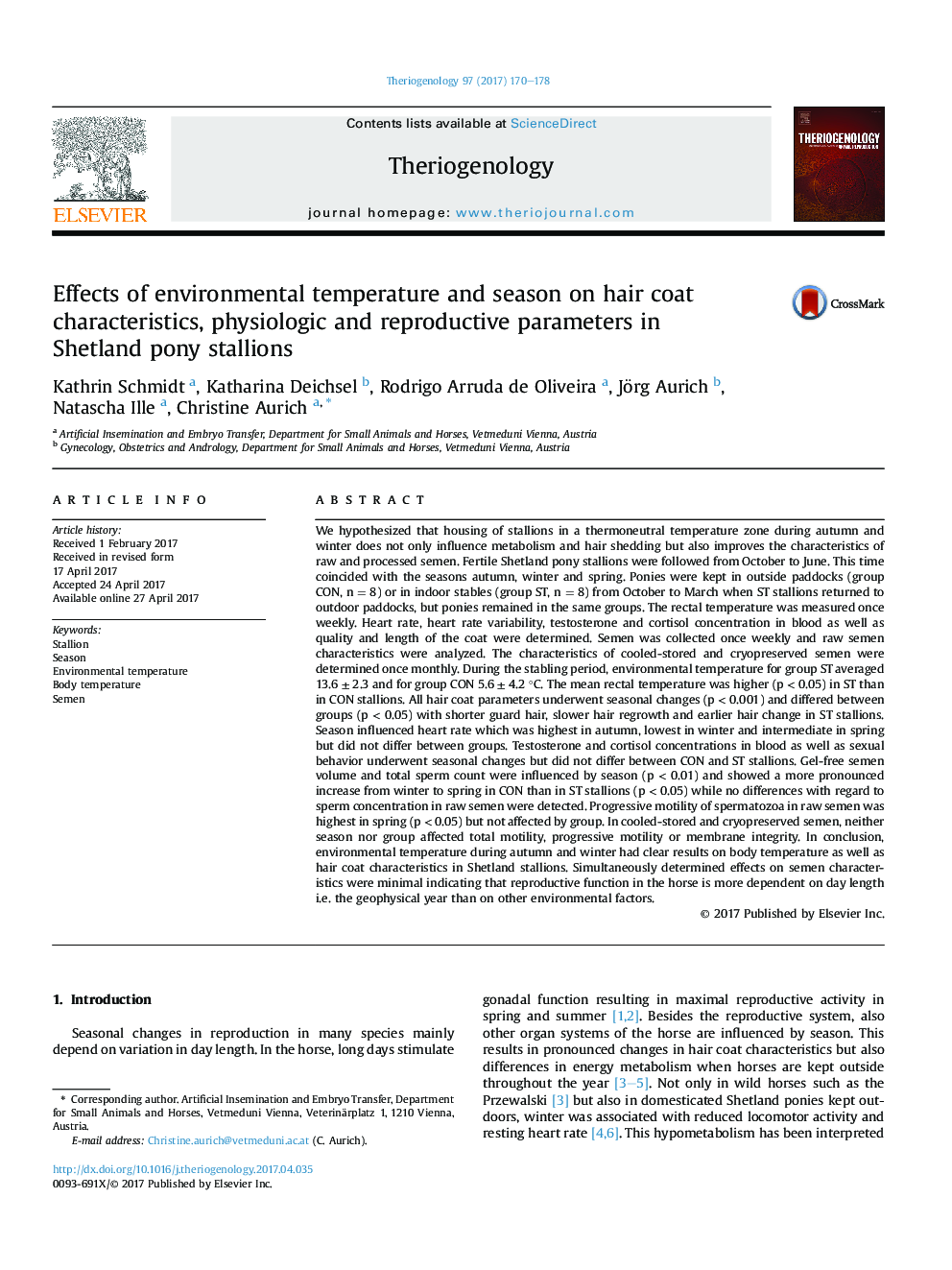| کد مقاله | کد نشریه | سال انتشار | مقاله انگلیسی | نسخه تمام متن |
|---|---|---|---|---|
| 5523178 | 1546072 | 2017 | 9 صفحه PDF | دانلود رایگان |

- Stallions were housed under different temperature conditions.
- Body temperature was reduced in stallions kept outdoors during winter.
- Environmental temperature affected hair coat quality.
- Reproductive parameters underwent seasonal changes.
- Environmental temperature had minor effects on semen quality.
We hypothesized that housing of stallions in a thermoneutral temperature zone during autumn and winter does not only influence metabolism and hair shedding but also improves the characteristics of raw and processed semen. Fertile Shetland pony stallions were followed from October to June. This time coincided with the seasons autumn, winter and spring. Ponies were kept in outside paddocks (group CON, n = 8) or in indoor stables (group ST, n = 8) from October to March when ST stallions returned to outdoor paddocks, but ponies remained in the same groups. The rectal temperature was measured once weekly. Heart rate, heart rate variability, testosterone and cortisol concentration in blood as well as quality and length of the coat were determined. Semen was collected once weekly and raw semen characteristics were analyzed. The characteristics of cooled-stored and cryopreserved semen were determined once monthly. During the stabling period, environmental temperature for group ST averaged 13.6 ± 2.3 and for group CON 5.6 ± 4.2 °C. The mean rectal temperature was higher (p < 0.05) in ST than in CON stallions. All hair coat parameters underwent seasonal changes (p < 0.001) and differed between groups (p < 0.05) with shorter guard hair, slower hair regrowth and earlier hair change in ST stallions. Season influenced heart rate which was highest in autumn, lowest in winter and intermediate in spring but did not differ between groups. Testosterone and cortisol concentrations in blood as well as sexual behavior underwent seasonal changes but did not differ between CON and ST stallions. Gel-free semen volume and total sperm count were influenced by season (p < 0.01) and showed a more pronounced increase from winter to spring in CON than in ST stallions (p < 0.05) while no differences with regard to sperm concentration in raw semen were detected. Progressive motility of spermatozoa in raw semen was highest in spring (p < 0.05) but not affected by group. In cooled-stored and cryopreserved semen, neither season nor group affected total motility, progressive motility or membrane integrity. In conclusion, environmental temperature during autumn and winter had clear results on body temperature as well as hair coat characteristics in Shetland stallions. Simultaneously determined effects on semen characteristics were minimal indicating that reproductive function in the horse is more dependent on day length i.e. the geophysical year than on other environmental factors.
Journal: Theriogenology - Volume 97, 15 July 2017, Pages 170-178